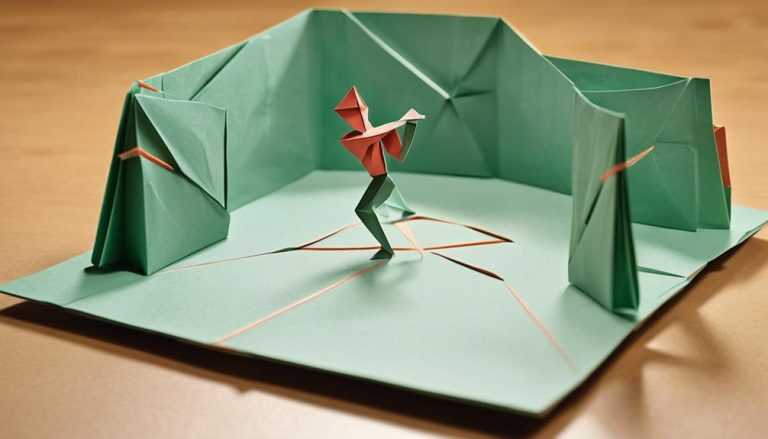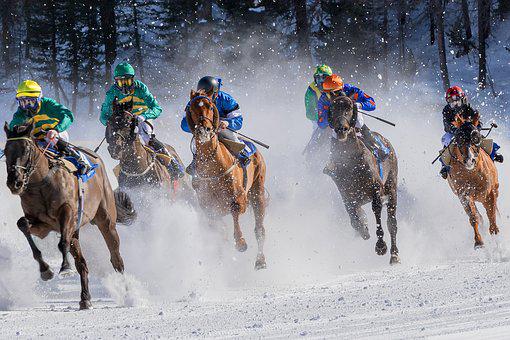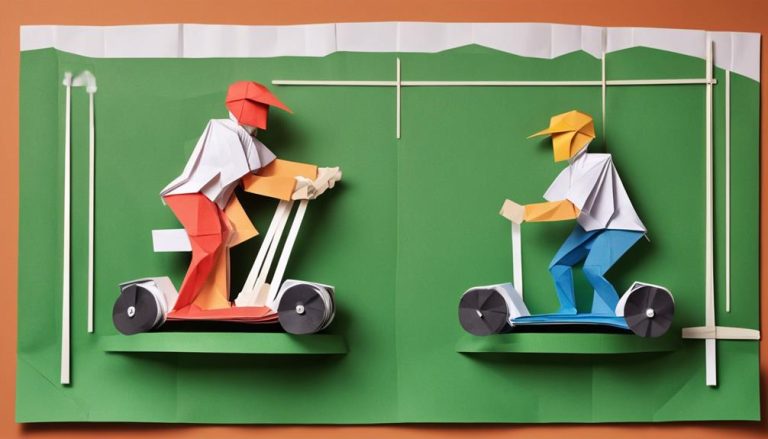General Rules of Inline Speed Skating
Get ready to hit the track with these essential rules for inline speed skating. Keep your skates well-maintained for peak performance. Make sure your wheels are good, screws tight, and bearings lubricated. Wear form-fitting clothes, padded shorts, gloves, and a snug helmet for safety. Know your race category and age group for fair competition. Master your starting technique, crouching low and imagining that explosive start. Learn drafting for speed and energy conservation. Understand passing etiquette and track layout strategies. Stay safe with proper gear and follow timing procedures. These rules are just the start of your inline speed skating journey.
Equipment Requirements
Wondering what gear you need for inline speed skating? When it comes to inline speed skating, having the right equipment is essential for both performance and safety. Let's delve into the essentials: skate maintenance and proper attire.
Skate maintenance is key to keeping your inline skates in top condition. Regularly check your wheels for wear and tear, ensuring they are clean and free of debris. Tighten any loose screws and bolts to prevent accidents while skating at high speeds. Lubricate your bearings to maintain smooth and efficient movement on the track. By taking care of your skates, you not only improve your performance but also extend the lifespan of your equipment.
Next up, let's discuss proper attire. When hitting the track for inline speed skating, it's important to wear clothing that allows for ease of movement and breathability. Opt for form-fitting attire that reduces drag and enhances aerodynamics. Consider wearing padded shorts and gloves to protect yourself in case of falls. Don't forget a well-fitted helmet to safeguard your head during intense races.
Race Categories
When it comes to race categories in inline speed skating, there are a few key points to keep in mind. You'll find different age groups for races, skill level divisions, and even gender-specific competitions. Understanding how these points factor into race categories will help you navigate the competitive world of inline speed skating more effectively.
Age Groups for Races
Understanding the age groups for races in inline speed skating is vital for competitors to know their race categories and compete effectively. Age eligibility and entry requirements vary depending on the event's organization. Different age groups guarantee fair competition and safety. Being aware of these classifications helps you prepare your training schedules and race strategies more effectively. It's important to check the specific age group divisions for each competition you enter to make sure you meet the requirements. Competing against skaters in your age group allows for a more balanced and competitive environment. Stay informed about the age group categories for races to maximize your performance and make the most out of your inline speed skating experience.
Skill Level Divisions
To continue your journey into the world of inline speed skating, let's explore the different skill level divisions, also known as race categories. When it comes to skill level divisions, there are a few key aspects to ponder:
- Skill level divisions: training strategies, competition tactics: Each race category may require specific training strategies to excel. Understanding the tactics needed for different skill levels can give you a competitive edge.
- Skill level divisions: mental preparation, race day mindset: Mental preparation plays an essential role in how well you perform on race day. Developing a strong mindset tailored to your skill level can help you stay focused and motivated during competitions.
- Skill level divisions: progression opportunities: Moving up the skill level divisions offers opportunities for growth and challenges that can enhance your overall skating abilities.
Gender-Specific Competitions
Exploring the domain of inline speed skating, delving into gender-specific competitions provides insight into the diverse race categories tailored to individual skaters' abilities and strengths. Gender equality in inline speed skating competitions is crucial to confirm that all skaters have equal opportunities to showcase their skills. By having separate race categories for different genders, the competition dynamics become more inclusive, allowing skaters to compete against others with similar physical attributes. This fosters a supportive environment where athletes can work towards improvement based on their performance standards without feeling disadvantaged. Embracing gender-specific competitions promotes fairness and encourages participation from a wider range of skaters, ultimately enhancing the overall competitiveness and spirit of inline speed skating events.
Starting Positions
When gearing up for an inline speed skating race, mastering the correct starting positions is essential for a successful launch off the line. Here are some key points to keep in mind:
- Starting Techniques: To achieve an ideal start, crouch down with your knees bent, placing one foot slightly ahead of the other. Your front arm should be extended forward, and your rear arm should be positioned back for balance. This position helps you exert maximum power when the race begins.
- Race Strategies: Before the race commences, visualize your start in your mind and focus on explosive power when the signal is given. Mindful breathing can help keep you calm and centered. Remember, a strong start can set the tone for the entire race.
- Sprinting Techniques: Once the race begins, push off forcefully with the rear foot while driving your arms back and forth in a controlled motion. Maintain a low posture to reduce wind resistance and maximize speed. Focus on short, powerful strides to accelerate quickly.
Mastering these starting positions, techniques, and strategies is vital for inline speed skaters. Practicing these movements regularly and incorporating them into your training regimen will help you gain a competitive edge in your races.
Drafting Techniques
When inline speed skating, mastering drafting techniques can give you a significant advantage. By utilizing slipstreaming benefits, you can conserve energy and maintain higher speeds for longer durations. Proper positioning techniques are essential to maximize the benefits of drafting and stay ahead of the competition.
Slipstreaming Benefits
Slipstreaming, also known as drafting, provides significant aerodynamic advantages in inline speed skating. When you slipstream behind another skater, you can increase speed and save energy. Here are three benefits of slipstreaming:
- Reduced Air Resistance: By closely following another skater, you can benefit from the reduced air pressure in their slipstream, allowing you to move faster with less effort.
- Energy Conservation: Riding in someone else's slipstream can help you conserve energy by minimizing wind resistance, enabling you to maintain higher speeds for longer durations.
- Tactical Advantage: Slipstreaming strategically can help you position yourself for a successful overtake or conserve energy for a decisive sprint finish.
Proper Positioning Techniques
To optimize your performance in inline speed skating, mastering proper positioning techniques, also known as drafting techniques, is vital. Proper posture plays a significant role in reducing wind resistance and increasing speed. By positioning yourself closely behind another skater, you can benefit from reduced air resistance, allowing you to conserve energy and maintain higher speeds for longer durations. To improve your drafting skills, focus on maintaining a low stance to minimize drag and maximize efficiency. Additionally, practice shifting your weight slightly to adjust your position based on the movements of the skater in front of you. These technique improvements will not only enhance your performance but also enable you to work effectively within a group or pack during races.
Passing Etiquette
Moving through the busy track during inline speed skating requires a vital understanding of passing etiquette to guarantee a safe and efficient race experience. When it comes to passing other skaters on the track, following these guidelines will help maintain a smooth flow and prevent accidents:
- Passing Strategy and Etiquette: When approaching a skater to pass, always communicate your intention with a clear signal or verbal cue. This could be a simple call-out like 'Passing on your left!' to alert the skater ahead of you. It's essential to choose the right moment to pass, ensuring there is enough space and time to overtake safely without disrupting the flow of other skaters.
- Communication and Awareness: Pay attention to the movements and signals of other skaters around you. Be ready to adjust your speed or position based on their actions. Maintaining constant communication through verbal cues or hand signals can help prevent collisions and misunderstandings on the track.
- Respect and Sportsmanship: Always remember to pass with respect for your fellow skaters. Avoid aggressive maneuvers or sudden changes in direction that could startle or endanger others. After passing, acknowledge the skater you overtook with a friendly gesture to promote a positive and supportive racing environment.
Track Layout
Traversing the track layout in inline speed skating demands a keen understanding of its arrangement and strategic positioning to maximize speed and performance. The track surface plays a vital role in your speed techniques. Smooth and well-maintained surfaces reduce friction, allowing for faster glides. When approaching corners, efficient cornering strategies are essential. To maintain momentum, lean into the turn, distributing your weight evenly across both skates. This technique helps you navigate sharp turns without losing speed.
Energy conservation is key in inline speed skating. Utilize drafting techniques by closely following behind another skater to reduce wind resistance. This strategic positioning enables you to conserve energy, making it easier to maintain high speeds for longer durations. Additionally, mastering the art of crossovers can greatly enhance your performance on straightaways and curves. By crossing one skate over the other in a fluid motion, you generate more power and propel yourself forward with greater force.
Understanding the track layout allows you to anticipate upcoming challenges and adjust your speed techniques accordingly. By familiarizing yourself with the track's twists and turns, you can plan your cornering strategies in advance, ensuring a smooth shift from one straightaway to the next. Remember, in inline speed skating, precision and strategic positioning are your allies in achieving peak performance.
Penalty System
Understanding the penalty system in inline speed skating is crucial for maintaining fair competition and guaranteeing adherence to rules and regulations. Penalties are enforced to uphold fairness and sportsmanship requirements, preventing skaters from gaining a strategic advantage through rule-breaking actions. Here are three key points to grasp about the penalty system in inline speed skating:
- Penalty Enforcement: Penalties can be issued for various infractions such as blocking, pushing, cutting off other skaters, or impeding the progress of opponents. Skaters must be aware of the rules and regulations to avoid penalties that could lead to disqualification or time penalties.
- Strategic Advantage: By penalizing skaters for unsportsmanlike conduct or rule violations, the penalty system ensures that all competitors have an equal opportunity to succeed based on skill and training rather than deceptive tactics. Adhering to the rules promotes fair play and maintains the integrity of the sport.
- Fair Play, Sportsmanship Requirements: Inline speed skating values fair play and sportsmanship, emphasizing the importance of respecting fellow competitors and the rules of the sport. Penalties serve as a reminder to all skaters to compete with honor and integrity, fostering a positive and respectful environment for all participants.
Safety Precautions
Implementing safety precautions is essential in inline speed skating to minimize the risk of injuries and provide a secure environment for all participants. One of the most important safety measures in inline speed skating is wearing a helmet. Helmets are vital in protecting skaters from head injuries in case of falls or collisions. Make sure your helmet fits properly and is securely fastened before hitting the track.
In addition to helmets, wearing proper protective gear such as knee pads, elbow pads, wrist guards, and gloves is highly recommended. These gears can prevent cuts, bruises, and more serious injuries in case of accidents. Ensure that your protective gear is in good condition and fits well to provide maximum protection.
To further enhance injury prevention, it is essential to practice good skating techniques and follow the rules of the track. Avoid sudden stops, maintain a safe speed, and be aware of your surroundings to reduce the risk of accidents. In the event of an injury, it is important to have emergency protocols in place. Know how to seek medical help and have a basic understanding of first aid to assist others if needed.
Timing Procedures
To accurately measure performance and track progress in inline speed skating, timing procedures play an important role in capturing skaters' speed and efficiency on the track. Here are some key aspects to take into account when it comes to timing procedures:
- Timekeeping Accuracy: In inline speed skating, precise timekeeping is essential to determine the winner of a race. Electronic timing systems are commonly used to guarantee accuracy down to fractions of a second. These systems often consist of sensors at the start and finish lines that record each skater's time as they cross these points. Skaters rely on this accurate timing information to assess their performance and make necessary improvements.
- Starting Line Procedures: Before the race begins, skaters must adhere to specific starting line procedures to guarantee a fair and orderly start. Skaters line up in their designated lanes, crouch down into a low stance, and await the signal to start. False starts are closely monitored, and skaters who jump the gun may face penalties or disqualification. Following the correct starting line procedures is essential for a smooth and competitive race.
- Track Calibration: Another crucial aspect of timing procedures is ensuring that the track's distance is accurately measured. Skating on a track with incorrect measurements can lead to skewed timing results and unfair competition. Track calibration involves verifying the track's length and ensuring that it meets the required standards for inline speed skating competitions. By maintaining proper track calibration, skaters can trust that their times accurately reflect their abilities.
Understanding and following these timing procedures is essential for inline speed skaters looking to compete at their best and gauge their progress effectively.
Disqualification Reasons
Now let's talk about the points system in inline speed skating. Points are deducted for rule violations, such as improper overtaking or blocking. Safety concerns like not wearing proper gear can also lead to disqualification.
Rule Violations
Rule violations in inline speed skating can lead to disqualification from a race, impacting a skater's performance and standings. Here are three common disqualification reasons to be mindful of:
- Guaranteeing the Track: When a skater fails to follow the designated track layout, cutting corners, or skipping portions of the track, referees may issue disqualification.
- Obstructing or Blocking: Deliberately obstructing opponents by blocking their path can result in disqualification. Respectful and fair racing is key to avoiding penalties.
- Unlawful Equipment: The use of prohibited equipment, such as oversized wheels or modified frames, can lead to disqualification. Make sure your gear complies with regulations to stay in the race and secure your race outcomes.
Safety Concerns
Safety concerns in inline speed skating can have a significant impact on a skater's performance and overall race experience. Protective gear is essential to prevent injuries; make sure to wear a helmet, wrist guards, knee pads, and elbow pads. Proper speed control is vital in maintaining safety on the track. Avoid sudden stops or changes in direction, as they can lead to collisions with other skaters. It's important to always skate in control and be aware of your surroundings to prevent accidents. Remember, safety should be your top priority when participating in inline speed skating events. By following these guidelines and staying vigilant, you can enjoy the thrill of the sport while minimizing the risks associated with it.
Training Tips
To enhance your performance in inline speed skating, incorporating specific training tips tailored to your skill level and goals is essential. Here are three vital training tips to help you excel in this exhilarating sport:
- Nutrition Strategies and Mental Preparation: Fueling your body with the right nutrients is key to achieving peak performance. Make sure you have a balanced diet rich in carbohydrates for energy, proteins for muscle repair, and fats for overall health. Additionally, practice mental preparation techniques such as visualization and positive self-talk to boost your confidence and focus before races.
- Recovery Techniques and Injury Prevention: Proper recovery is just as important as training itself. Incorporate rest days into your routine to allow your body to recover and prevent burnout. Utilize recovery techniques like foam rolling, stretching, and ice baths to aid in muscle recovery and reduce the risk of injuries. Strengthening exercises for your core and lower body can also help prevent common inline speed skating injuries like strains and sprains.
- Consistent Training and Goal Setting: Consistency is key in improving your speed skating abilities. Develop a structured training plan that includes a mix of endurance, speed, and technique-focused sessions. Set specific, achievable goals to track your progress and stay motivated throughout your training journey. Remember to listen to your body and adjust your training plan as needed to avoid overtraining and plateaus.
Frequently Asked Questions
Can Inline Speed Skaters Wear Any Type of Protective Gear During Races?
You can wear various protective gear options during races. This gear provides safety and can give you competitive advantages. It includes helmets, knee pads, elbow pads, wrist guards, and gloves. Choose wisely for maximum performance.
Are There Any Restrictions on the Type of Wheels That Can Be Used in Inline Speed Skating Races?
When it comes to wheels in inline speed skating races, there's no holding back! Hyperbolically speaking, you can't just slap on any wheels. There are strict wheel size restrictions and material limitations to keep things fair and competitive.
How Often Are Inline Speed Skating Tracks Resurfaced or Maintained?
To guarantee safety and peak performance, inline speed skating tracks require regular resurfacing and maintenance. Proper track upkeep is essential for both the safety of skaters and the longevity of their equipment.
Can Skaters Be Penalized for Not Wearing the Correct Uniform During a Race?
If you don't wear the right uniform during a race, you may face penalty enforcement. Uniform regulations are serious in inline speed skating. Make sure you follow them to avoid setbacks on the track.
Are There Any Age Restrictions for Competing in Inline Speed Skating Races?
You can join inline speed skating races at any age, but some events might need parental consent for minors. Different skill levels exist, and training programs can help you improve. Embrace the thrill!
Conclusion
So, remember to practice these general rules of inline speed skating to improve your performance and stay safe on the track. Keep your equipment in top condition, know the race categories, start in the right position, use drafting techniques effectively, and always follow passing etiquette. Safety precautions are essential to preventing accidents. Timing procedures are vital for accurate results. Avoid disqualification by following the rules. Train hard and stay focused to excel in this exhilarating sport!






